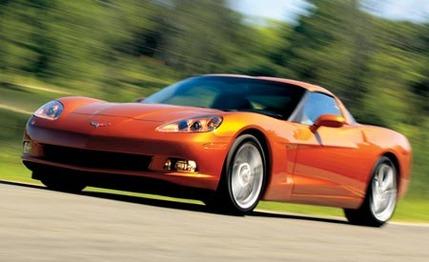 Road Test
Road Test
From a list of 22 new and notable features on the 2008 Corvette, item 12 caught our eye: improved steering feel.
That phrase was more significant to us than the biggest news on the list of changes—that the Vette's pushrod V-8 has been enlarged to 6.2 liters and now makes 430 horsepower (436 with an optional exhaust system), up from an even 400. The reason we were more interested in item 12 is that for years we've regarded the Vette's steering feel as unsatisfactory.
It's an annoying trait. Although a Corvette can be driven at ludicrously high speeds around a racetrack—an '07 Vette outran an Audi R8 and Porsche 911 Turbo in our second-annual Lightning Lap runoff at Virginia International Raceway [August 2007]—it can make even experienced drivers nervous on a challenging public road. The Porsche 911, for instance, may not be as quick on the track as a Vette, but it's far more satisfying because it imparts the same level of confidence that one gets from driving a Mazda Miata.
Our hope was that, with the "improved steering feel," the Vette would now be as user-friendly as it is fast. To help discover if this were the case, we brought along a 2007 model for comparison.
The new steering system is mechanically similar to the old car's variable-assist rack-and-pinion arrangement. The ratio remains the same, but according to Chevrolet engineers, the rack is manufactured with tighter tolerances and roller-element bearings that replace bushings to give less compliance and, ergo, more precision. The variable assist was recalibrated for a more natural buildup of steering forces.
We drove the old car first and immediately were reminded of the numb steering we'd noticed before. The effort is light at parking-lot speeds but then abruptly gets heavier with no apparent benefit as the speed rises. When driving through a turn at moderate speeds, the steering is heavy enough to give the impression that the car is working hard, when in fact it's not.
The new car's steering effort increases in a more natural way. It's generally lighter but, at the same time, feels less artificial, like there's less friction in the system. The Vette no longer has to be muscled through turns; it now glides along with far less drama.
Most of the curvy roads near our offices have broken pavement and are bumpy—this is Michigan, after all, a place where blacktop is beaten up by the weather and a shrinking state budget. These bumps, especially when they're in the middle of a turn, still present a problem for the Vette. The car will skip sideways, which makes drivers understandably nervous.